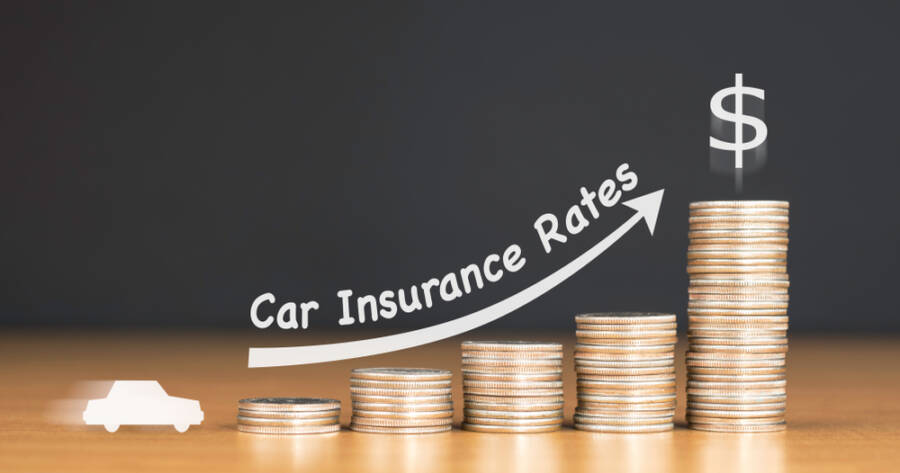Auto insurance costs are expected to shift noticeably in 2026 as repair expenses, vehicle technology, and regional risk factors continue to evolve. Insurers are adjusting premiums to reflect pricier components, more advanced safety systems, and rising claim payouts. At the same time, telematics programs and personalized pricing models are becoming more influential in determining rates. For drivers, understanding the forces shaping key changes is crucial to anticipating how premiums may move in the year ahead.
Why Auto Insurance Rates Are Rising
Auto insurance premiums have been climbing for several reasons in 2025. Inflation continues to increase the cost of goods and services, including car repairs and medical care. When vehicles need repairs after an accident, the cost of replacing parts has risen significantly. Advanced technology in modern cars, such as cameras, sensors, and electric components, is expensive to repair or replace.
Severe weather events are another driving factor. Natural disasters like hurricanes, floods, and wildfires are occurring more frequently. These events cause extensive vehicle damage, leading to a rise in insurance claims. To cover these risks, insurers are raising premiums for policyholders.
Technology’s Influence on Insurance Rates
Technology is reshaping how insurers calculate premiums and manage claims. Telematics, for example, is now widely used to monitor driving behavior. Devices installed in vehicles or apps on smartphones track factors like speed, hard braking, and overall mileage. Drivers with safer habits may qualify for discounts, while risky drivers could face higher rates.
Additionally, automated systems for processing claims are becoming more common. These technologies speed up the process, reducing administrative costs for insurers. While these savings may eventually benefit consumers, the high cost of repairing advanced vehicle technology often outweighs these reductions.
Electric vehicles (EVs) are also impacting rates. While EVs offer environmental benefits, their repair costs are generally higher than those of traditional gas-powered cars. Batteries, for instance, are costly to replace, influencing premiums for EV owners.
The Impact of Changing Laws on Rates
As states update safety, data-privacy, and vehicle-classification laws, auto insurance rates are expected to shift noticeably in 2026. Several regions are introducing stricter rules for advanced driver-assistance systems (ADAS), requiring insurers to reassess how features like lane-keeping, automated braking, and hands-free driving affect premiums. At the same time, emerging data-privacy legislation may limit how much driving behavior insurers can collect from telematics devices, potentially reducing discounts for usage-based plans while raising base rates to compensate for less risk visibility.
Additionally, states revising liability thresholds and minimum coverage requirements could push premiums higher across the board. For drivers, these legal changes will make it more important than ever to compare policies, understand how new laws affect pricing, and reassess coverage needs heading into 2026.
How Inflation Is Driving Premium Increases
Inflation is one of the most significant contributors to rising auto insurance rates in 2026. Higher prices for labor, car parts, and medical treatments mean that insurers are paying more to settle claims. These increased expenses are then passed on to policyholders through higher premiums.
Insurance companies also consider the economic environment when setting rates. As inflation affects all sectors, the cost of running an insurance business—like employee salaries and operational expenses—also rises. These added pressures lead to higher rates for customers.
What You Can Do to Control Your Insurance Costs
Despite rising rates, there are steps you can take to manage your auto insurance premiums in 2026. One of the simplest strategies is to shop around for coverage. Comparing quotes from multiple insurers can help you find a better deal. Some companies may offer discounts or promotions that others do not.
Bundling your auto insurance with other policies, like home or renters insurance, is another way to save. Many insurers provide discounts for customers who combine their policies.
Maintaining a clean driving record is crucial for keeping costs low. Avoiding accidents and traffic violations ensures you won’t face unnecessary rate hikes. Enrolling in a telematics program could also reward you with discounts for safe driving habits.
Another option is raising your deductible. A higher deductible means you’ll pay more out of pocket in case of a claim, but it reduces your monthly premium. However, be sure you can afford the higher deductible if an accident occurs.
The Future of Auto Insurance
The auto insurance industry is evolving rapidly. Insurers are using more data to calculate rates, which makes understanding your policy options even more important. As technology continues to play a larger role in how vehicles are built and used, drivers should expect further changes to coverage and premiums.
Environmental factors and regulatory shifts will also influence future trends. Staying informed about these changes can help you anticipate adjustments and make smarter decisions about your coverage.
Learn More About Auto Insurance Changes in 2026
Auto insurance rates are changing due to inflation, technology, and new regulations. While premiums are rising, drivers have options to manage their costs. Comparing quotes, bundling policies, and driving safely are effective ways to save.
Staying informed about industry trends will help you protect yourself and your vehicle without overpaying. Take the time to review your coverage and explore new opportunities to secure the best possible rate for your needs.







